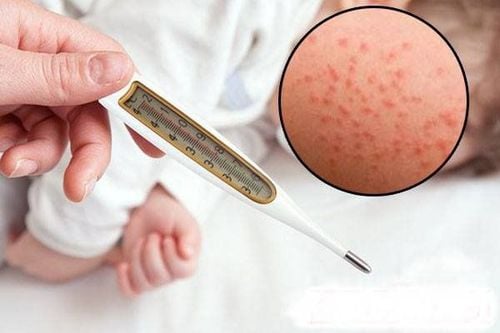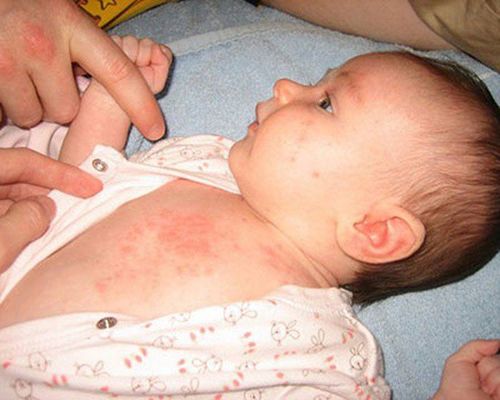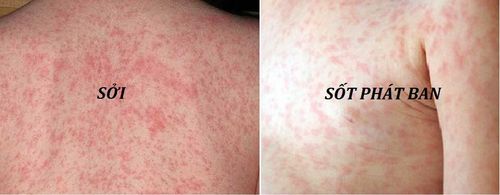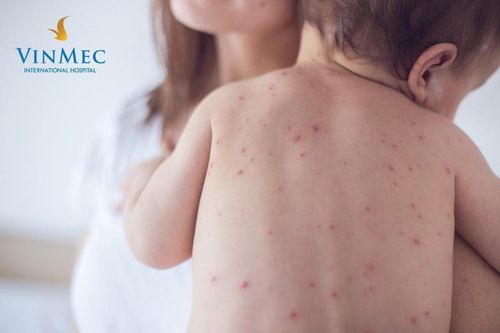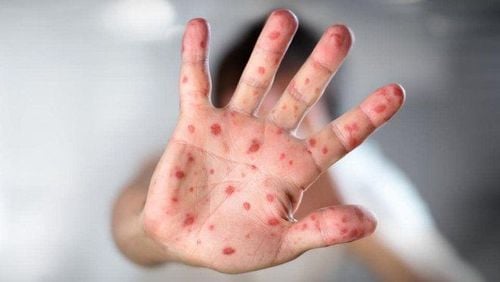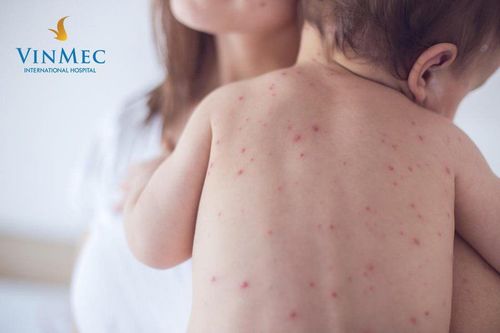This is an automatically translated article.
The article was written by Specialist Doctor II Pham Thi Khuong - Pediatric Center - Vinmec Times City International HospitalMeasles is an acute respiratory infection caused by the measles virus. The disease is clinically characterized by fever, conjunctivitis, inflammation of the respiratory and digestive tracts, with a red maculopapular rash that develops sequentially from the face to the trunk. Measles in children can become epidemic if not detected in time.
1. How is measles transmitted?
The measles virus is highly contagious through coughing and sneezing, close or direct contact with an infected person or nasopharyngeal secretions. The virus remains active and contagious in the air or on contaminated surfaces for nearly 2 hours. It can be transmitted from an infected person from 4 days before the onset of the rash to 4 days after the rash appears.Usually measles occurs in 4 stages:
Incubation/incubation period: 8 - 11 days: Usually no clinical symptoms. Period of onset (inflammation phase): Lasts 3-4 days with mild or moderate fever, then high fever. After conjunctivitis, red eyes with rust and swollen eyelids, inflammation of the nose and throat: Watery eyes, runny nose, cough. Enlarged peripheral lymph nodes may also be present. The full-blown period (the eruption phase): Lasts 4-6 days. The rash develops in 3 days: Sequentially growing behind the ears, spreading to the face and then spreading to the neck, chest, back, hands, day 3 spreads to the legs. The form of the rash is erythematous, maculopapular, a small, slightly raised rash on the skin, alternating with patches of healthy skin. The rash is scattered or widespread, attached to each other in round clusters of 3 - 6 mm. Recurrence period (rash phase): The rash flies in the same order as it sprouted. After the rash flies, there are bruises on the skin. Usually, the fever goes away when the rash is gone, unless there are complications, the child still has a fever after the rash has flown.
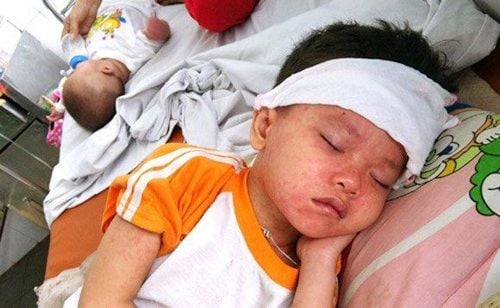
Giai đoạn mọc ban kéo dài 4 - 6 ngày
2. Complications of measles in children
If not detected and treated promptly, measles in children can leave dangerous complications such as:otitis media - this is a complication that must always be thought of first. Corneal ulceration. Acute encephalitis accounts for (about 0.1% of measles cases): Children, after the rash (1-15 days) appear lethargic, lethargic, convulsive, headache, vomiting, stiff neck . Diarrhea. Pneumonia due to superinfection with bacteria Influenzae type B, Hemophilus. The latent form of tuberculosis re-emerges due to a weakened immune system.
3. How is measles different from typhus?
Distinguish the signs of typhus and measles as follows:
Rubella (or German measles): Usually low-grade fever, mild respiratory tract infections, maculopapular rash like measles but usually the rash is smaller, growing sparser and grow early in the first 1-2 days, the rash grows at the same time, when flying does not leave bruises, or has lymph nodes behind the ears, large, painful occipitals. Other rash viral diseases (Adeno virus, ECHO, Coxsackie,...): Measles-like maculopapular rash usually develops on the whole body out of order. Allergic rash: Generalized papule (urticaria) in no order, often itchy, caused by drugs, weather, food, ...
4. Guide to care and monitor children with measles at home
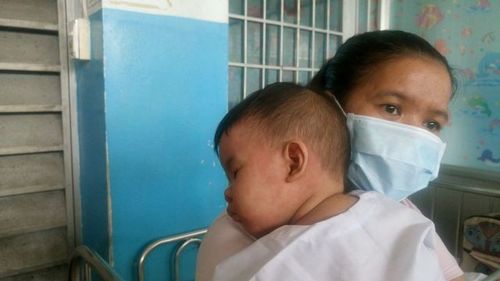
Người chăm sóc cần đeo khẩu trang, rửa tay sạch trước và sau mỗi lần tiếp xúc với trẻ bị bệnh.
Initially, the child should be examined at the nearest medical facility, not to a place where there are too many patients to avoid spreading other diseases. If the child has common measles and is eligible for care and isolation, home care should be given after having a full opinion on how to care for the child at home, according to the instructions of the doctors. Including:
Isolate sick children from healthy children. Give your child fever-reducing medicine when the fever is ≥ 38.5°C as prescribed by the doctor. Caregivers need to wear a mask and wash their hands before and after each contact with a sick child. Maintain hygiene of skin, eyes, nose and throat: Change clothes, clean body such as bathing daily, avoiding cold, eye drops, nose drops with 0.9% saline 3 times a day. Clean the surrounding environment, keep the room ventilated and clean. Breastfed children still continue to breastfeed and combine with a reasonable complementary diet (if the child is over 6 months), older children remember to drink enough water every day. Avoid drafts, eat foods containing allergic proteins, stimulant spices, do not drink carbonated water, stimulant drinks. Do not take antibiotics if there are no complications. There is currently no specific antiviral treatment for the measles virus. Severe complications of measles in children can be avoided with supportive treatment: Ensure good nutrition, drink enough fluids, and replace fluids and electrolytes with oral fluids and electrolytes. was lost through diarrhea and vomiting. For children to eat soft foods that are easy to digest, eat enough, cook thoroughly and when eaten, they should be divided into many meals according to the child's taste so that they are easy to eat. Do not use spices that cause indigestion.
In the case of children with complications of measles such as diarrhea or pneumonia, oral zinc supplements are required. Older children make sure to eat enough nutrients, drink lots of water, fruit juices containing a lot of Vitamin A.
5. When should the child be taken to the hospital immediately?
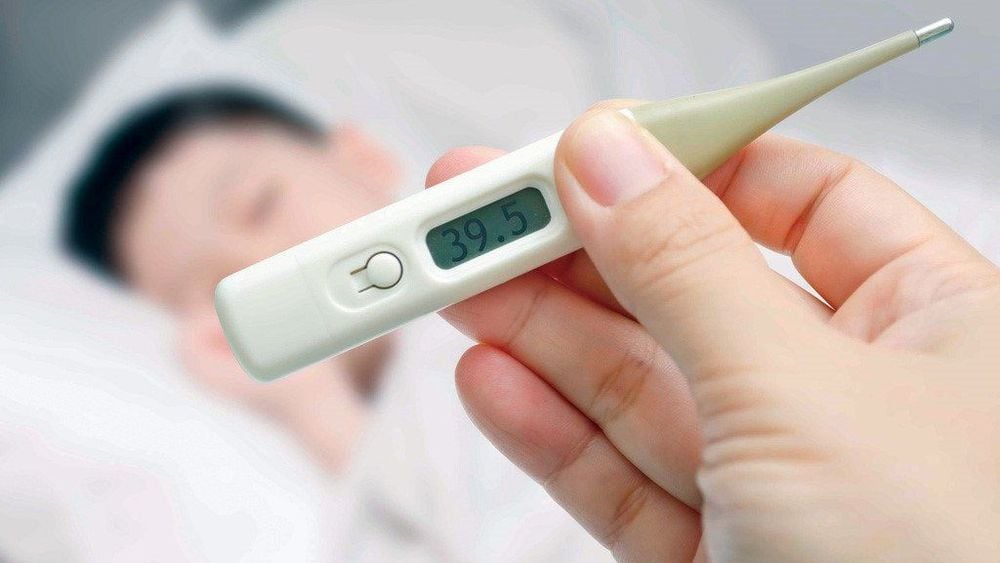
Nếu trẻ sốt cao khó hạ trên 48 giờ cần đưa trẻ đi khám ngay.
6. Did the child get measles a second time?
Until now, according to the world literature, people after having measles will have lifelong immunity, if they do not suffer from immunodeficiency diseases or have diseases requiring use of corticosteroids that cause depression. reduced immunity.Measles in children can be treated at home if detected early and cared for properly. To avoid dangerous complications with children's health, parents need to quickly detect the signs of measles to have a timely treatment plan.
Please dial HOTLINE for more information or register for an appointment HERE. Download MyVinmec app to make appointments faster and to manage your bookings easily.




